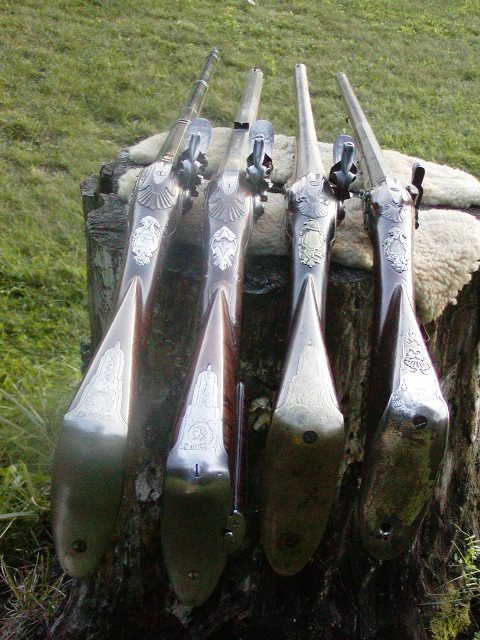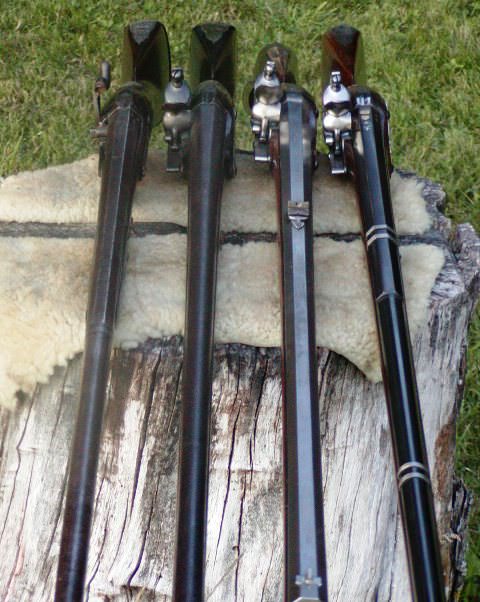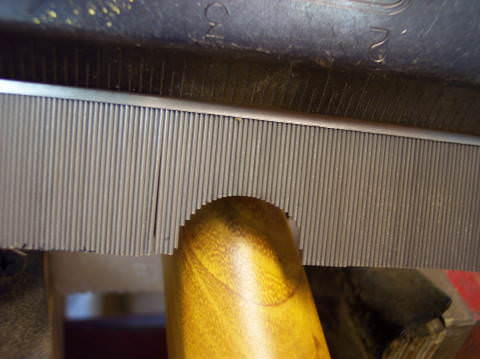I'm working on shaping the forestock of my Leman pre-shaped (not pre-carved) stock. As the stock comes "factory" from TOTW, the rails were to high and the RR channel was to deep. So, I have trimmed both the rail tops and the RR channel of the stock down.
Now I'm shaping the forestock, and following "The Gunsmith of Grenville" I have marked off the upper forestock 1/3 for the top, and 2/3 for the bottom so that I can shape the upper rails from the top to the mark, and the bottom from the RR channel edge to the mark.
For some reason I'm having a "time" visualizing how the bottom 2/3 should "look." In TGOG book, the author shows where he's actually made the area from the RR channel edge to the 2/3 mark flat. He then goes on and rounds this section.
Now, if you look at my pic's below you can see where I've started the lower part of the upper forestock shaping. I'm shaping this using my files in a "draw file" method (as instructed in TGOG) and this method works well. I've studied many pictures of forestock's so that I can visualize how it should look. (That doesn't seem to help me get this)
Right now the lower end of the upper forestock looks to "fat." But....I fear that if I continue filing that bulge area down......I will get one very awful looking upper forestock. Yeah.....it's a visual I can't seem to grasp.
So....more wood removal or draw-filing of the "fat round" section?
Thanks much....you fellows are great.
Dave



Now I'm shaping the forestock, and following "The Gunsmith of Grenville" I have marked off the upper forestock 1/3 for the top, and 2/3 for the bottom so that I can shape the upper rails from the top to the mark, and the bottom from the RR channel edge to the mark.
For some reason I'm having a "time" visualizing how the bottom 2/3 should "look." In TGOG book, the author shows where he's actually made the area from the RR channel edge to the 2/3 mark flat. He then goes on and rounds this section.
Now, if you look at my pic's below you can see where I've started the lower part of the upper forestock shaping. I'm shaping this using my files in a "draw file" method (as instructed in TGOG) and this method works well. I've studied many pictures of forestock's so that I can visualize how it should look. (That doesn't seem to help me get this)
Right now the lower end of the upper forestock looks to "fat." But....I fear that if I continue filing that bulge area down......I will get one very awful looking upper forestock. Yeah.....it's a visual I can't seem to grasp.
So....more wood removal or draw-filing of the "fat round" section?
Thanks much....you fellows are great.
Dave













